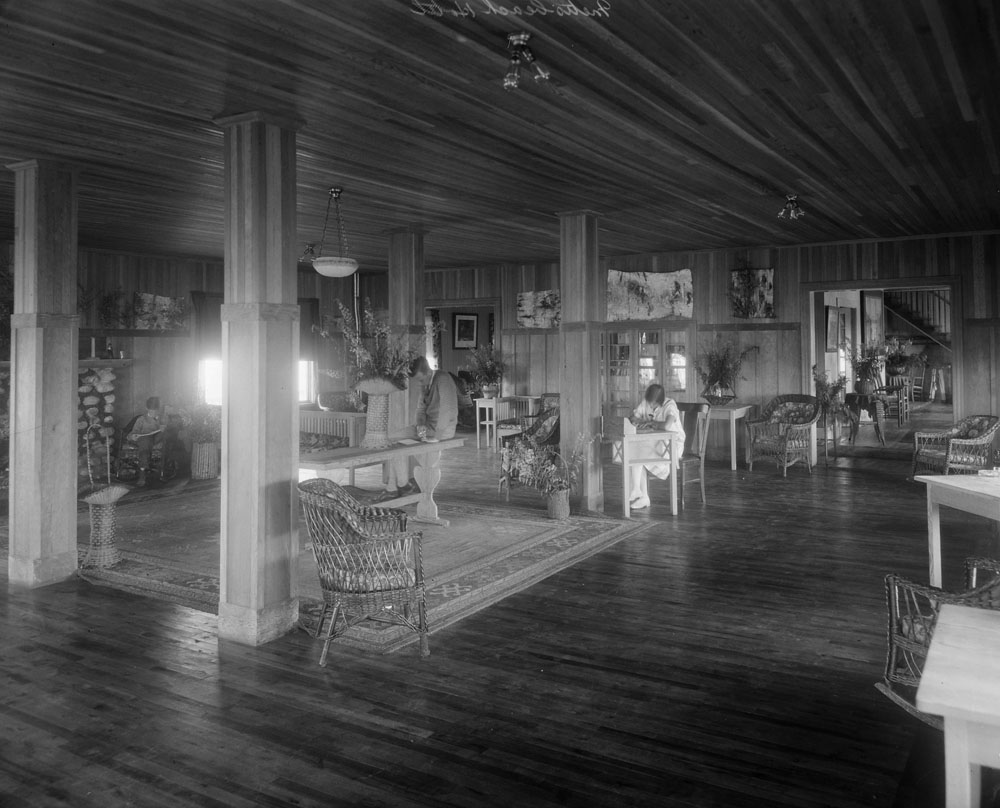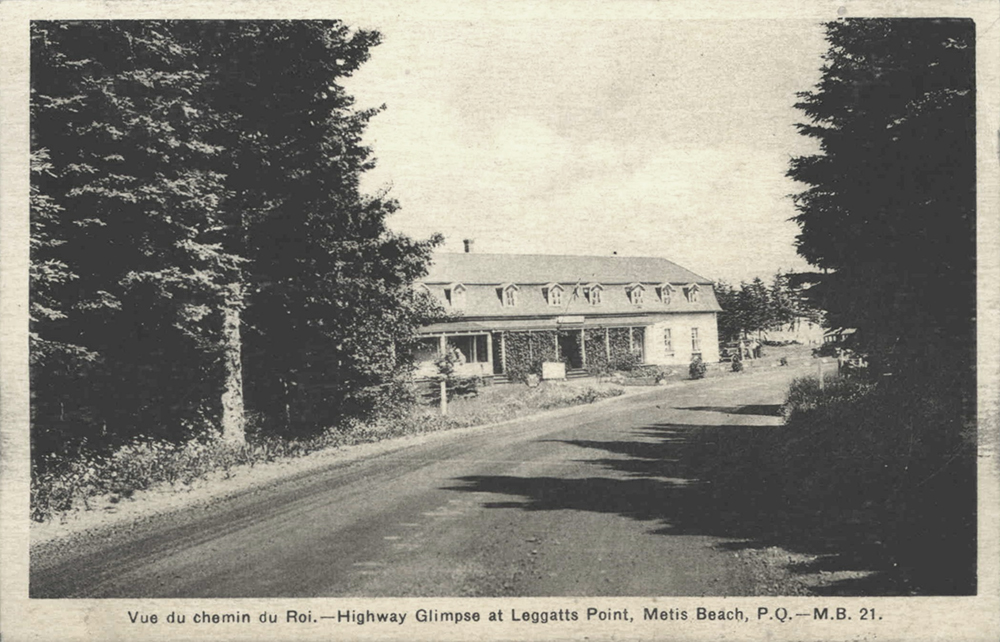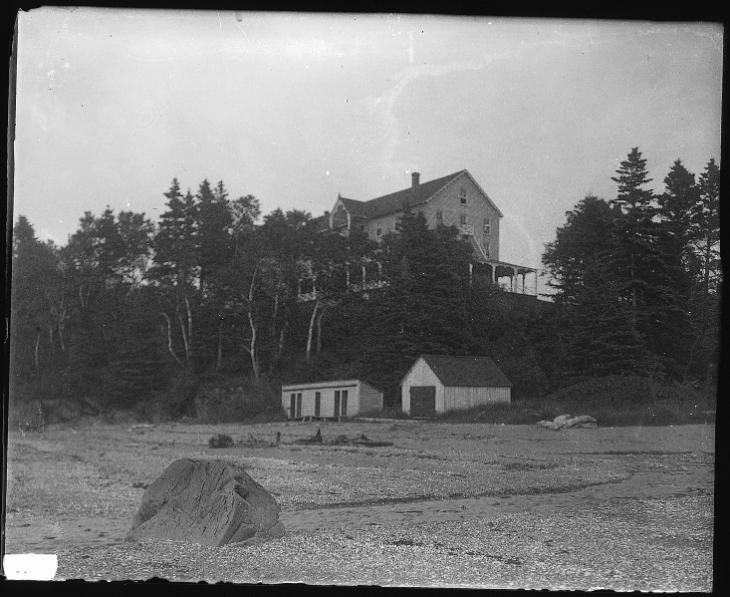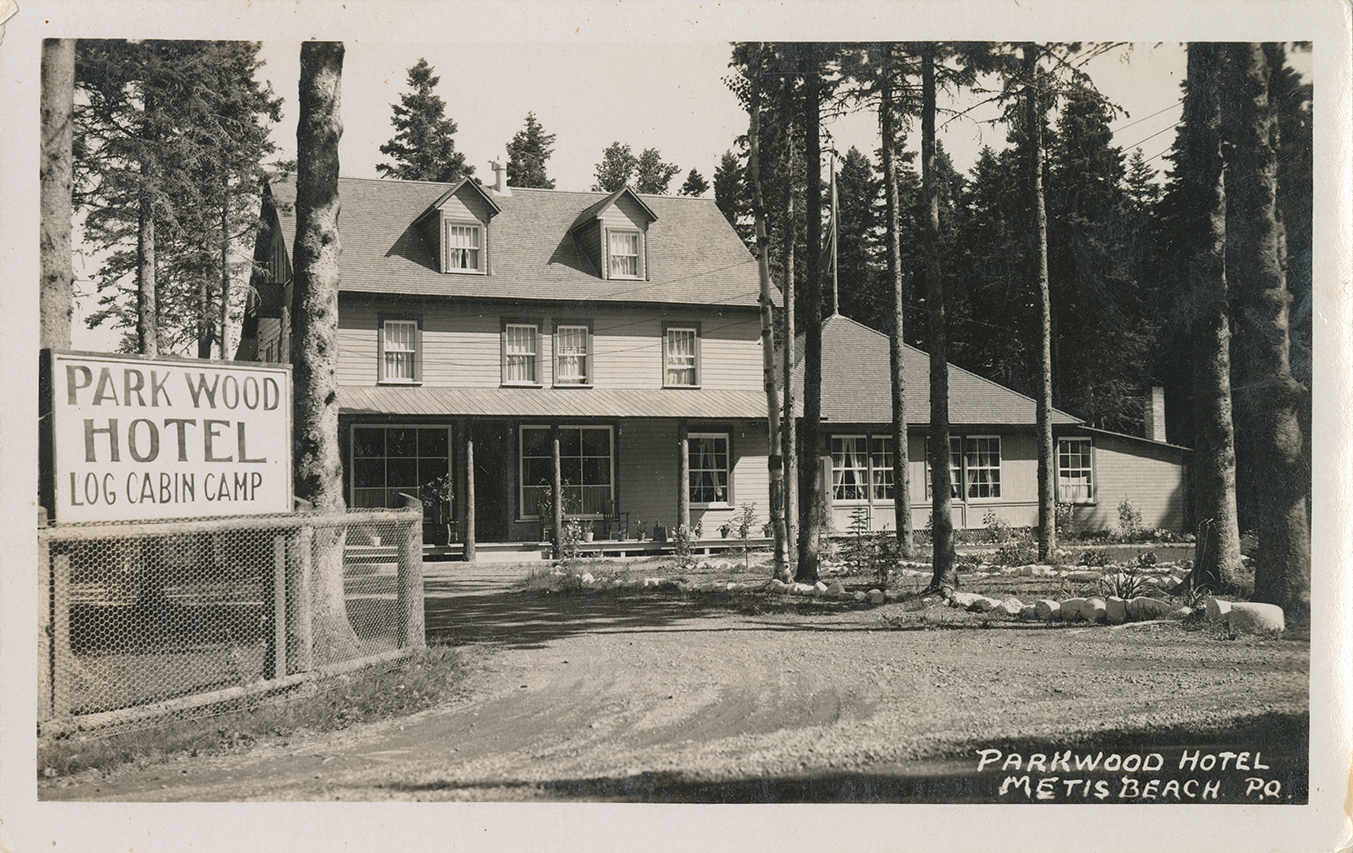Tourism Entrepreneurs – Building Hotels for Weary Travellers
The tourism economy of Metis began in earnest in 1858 with the opening of the first hotel. Prior to that weary travellers in need of a bed and a meal had to content themselves with a bed in a private home and a seat at the owner’s kitchen table.

A rare glimpse into hotel life in the 1920s is offered by this photography of the interior of the Boule Rock Hotel.
The early hotels were rustic affairs. Built entirely of wood, internal plumbing was still a long way off. But they compensated with good food, generous hospitality and occasional entertainment. Along with the Macniders and the Astles, the Turriffs pioneered tourism in Metis. Their entrepreneurship and building prowess transformed a sleepy shoreline village into one of the province’s most popular watering holes. The first Turriff hotel was advertising rooms as early as 1858. Turriff Hall was erected in 1871.
There are few surviving vestiges of the once thriving hotel economy. Most of the rambling wooden hotels were demolished. Several burned to the ground. Today, the hotels are celebrated with historical plaques that tell the story of the entrepreneurial families who built them and the generations of visitors who made them their summer abode.

Killicrankie is the name of the historic inn at Leggatt’s Point, the only surviving wooden hotel from the early days of tourism in Metis.
Metis still welcomes tourists. Two auberges bookend the village. Camping Annie is one of the most popular campsites in the region, home to a large population of seasonal residents and itinerant campers. Many private homes have become part of the modern tourism economy, offered to friends or strangers who make Metis their home for a day, a week, a month or the entire season.



